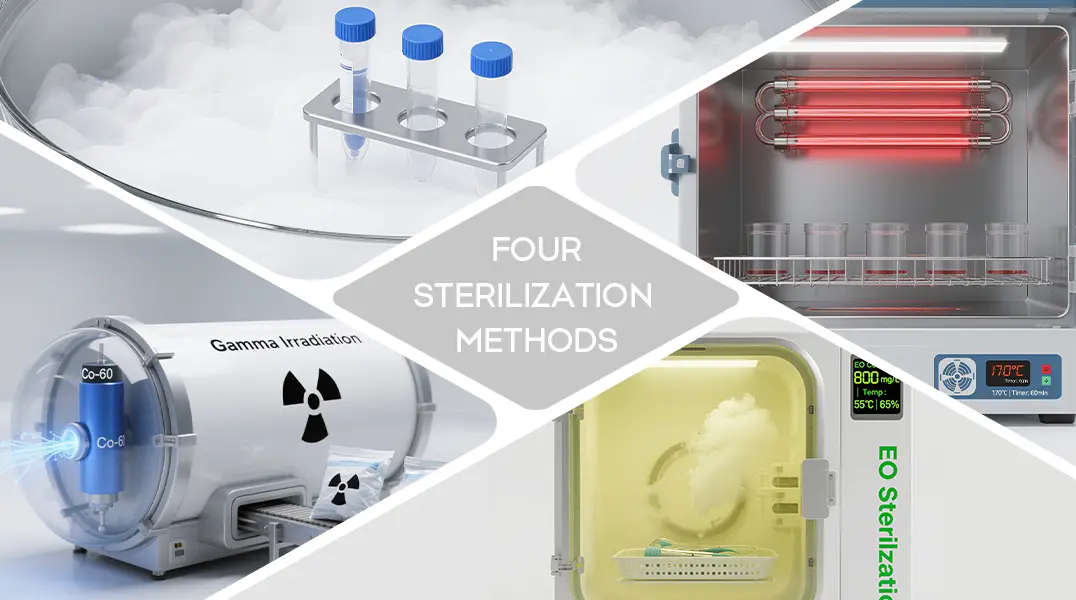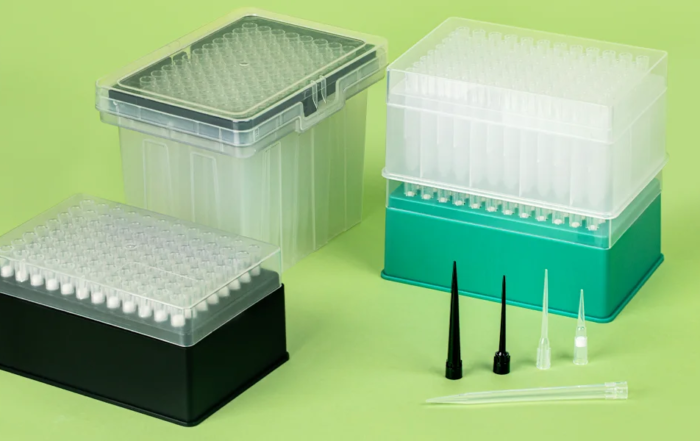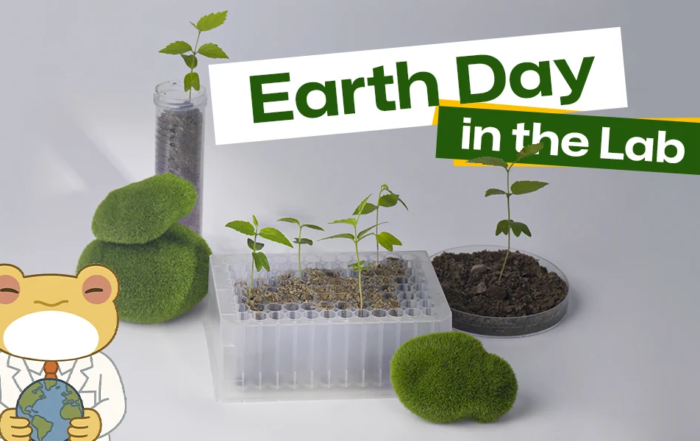In biological/chemical laboratories, sterilization is a crucial and unavoidable topic. Ensuring every pipette tip, tube and plate in your lab is truly sterile isn’t just good practice—it’s the difference between reliable data and costly contamination. In this post, we’ll walk you through the four most common sterilization methods—steam autoclaving, gamma irradiation, ethylene oxide and dry heat—so you can choose the right process for polypropylene, polycarbonate, polystyrene and other lab plastics.
Whether you’re a procurement manager deciding between sterile and non‑sterile consumables or a bench scientist troubleshooting unexpected culture growth, you’ll find clear, practical guidance on material compatibility, process parameters and common pitfalls.
Steam Autoclaving (Pressurized Steam)
Steam autoclaving is a cornerstone sterilization method in laboratories, leveraging pressurized saturated steam to achieve rapid, effective microbial inactivation. Operating at industry-standard conditions of 121°C (250°F) and 15 psi for 15–20 minutes, it irreversibly denatures proteins and hydrolyzes DNA in all life forms—including hardy bacterial endospores. Its efficacy makes it ideal for reusable labware and non-sterile consumables where heat resistance permits.
Principles of Operation
Autoclaves work by replacing air with saturated steam under pressure. The sealed environment raises water’s boiling point beyond 100°C, enabling rapid heat penetration into materials. Successful sterilization depends on three factors:
- Complete air removal to eliminate cold spots.
- Unobstructed steam circulation around all surfaces.
- Sustained time-temperature exposure validated for load density.
Failures often trace to trapped air, overloading, or blocked vents.

Schematic diagram of steam circulation inside the autoclave
Material Compatibility
Not all plastics tolerate autoclaving. Material selection determines success:
- Polypropylene (PP/PPCO) excels in autoclavability, enduring >100 cycles at 121°C with minimal deformation. It’s ideal for reusable bottles, centrifuge tubes, and pipette tip racks.
- Polycarbonate (PC) withstands limited cycles (1–2) but degrades rapidly—crazing or cracking compromises integrity. Use sparingly for items like vacuum filter units.
- Polystyrene (PS), LDPE/HDPE, and acrylics (PMMA) melt or warp at autoclave temperatures and must never be autoclaved. This includes most pipettes, petri dishes, and microplates.
How to perform steam autoclaving
Proper technique prevents common failures like imploded containers or incomplete sterilization:
1. Preparation
- Thoroughly clean items—organic residue shields microbes.
- Loosen caps or use vented closures to prevent vacuum collapse during cooling.
- Avoid overloading; leave space for steam penetration.
2. Cycle Execution
- Use slow exhaust cycles for liquids to prevent boil-over.
- Validate with chemical indicators (e.g., autoclave tape) or biological spore tests.
3. Post-Cycle Handling
- Cool to 80°C before opening to avoid thermal shock.
- Dry items completely before storage.
- Label sterilized items with dates; use within 7 days.
In typical laboratory workflows, autoclaving is often performed on-site for non-sterile polypropylene labware (e.g., reagent bottles, specimen containers) to achieve sterility as needed. This provides flexibility and cost savings over pre-sterilized alternatives. However, single-use plastics like pipette tips or PCR plates should always be sourced pre-sterilized, as their materials (PS, LDPE) cannot withstand autoclaving.
Gamma (Radiation) Sterilization
Gamma radiation sterilization is a cold, non-thermal industrial process that uses high-energy photons from Cobalt-60 (⁶⁰Co) sources to penetrate sealed packaging and eliminate microorganisms. Unlike autoclaving, it operates at ambient temperatures, making it ideal for heat-sensitive plastics. Manufacturers leverage gamma irradiation to deliver pre-sterilized, ready-to-use labware—such as pipette tips, PCR plates, and cell culture flasks—with a sterility assurance level (SAL) of 10⁻⁶, as validated under ISO 11137 standards.
How Gamma Sterilization Works
Gamma rays disrupt microbial DNA through ionization, preventing replication and ensuring lethality. The process involves:
- Deep penetration: Gamma photons traverse dense materials and sealed packaging, sterilizing products uniformly without compromising barrier integrity.
- Validated dosing: Industrial facilities deliver precisely measured doses (typically 25–45 kGy) based on product bioburden and material tolerance.
- Terminal sterilization: Products are sterilized after final packaging, guaranteeing sterility until opened.

Gamma irradiation facility processes sealed packaged laboratory consumables
Material Compatibility
Gamma’s room-temperature operation accommodates plastics incompatible with heat-based methods:
- Polystyrene (PS) and Polycarbonate (PC): Widely sterilized via gamma irradiation (e.g., cell culture bottles, microplates). Thermo Fisher confirms PC’s compatibility, though embrittlement may occur after repeated cycles.
- Polypropylene (PP), PVC, and copolymers: Tolerate gamma doses without melting or deformation.
- Sensitive polymers: Some materials (e.g., certain polyurethanes, acrylics) experience discoloration or reduced toughness due to free radical generation during irradiation. Dose optimization minimizes degradation.
Advantages for Lab Consumables
- Pre-sterilized convenience: Eliminates in-house processing; products arrive “sterile, irradiated” and ready for critical applications (e.g., PCR, cell culture).
- Packaging integrity: Sterilizes sealed items, preventing post-process contamination.
- Broad applicability: Effective for complex geometries and high-density loads (e.g., stacked tip racks).
Limitations and Industry Practices
- Material alterations: High doses may induce embrittlement in polymers like PC or discoloration in clear plastics. Manufacturers mitigate this via dose mapping and polymer stabilization.
- Facility requirements: Requires specialized irradiators with shielded chambers and safety protocols; not feasible for labs.
- Regulatory rigor: Compliance with ISO 11137 demands rigorous validation of dose uniformity and microbial lethality.

Comparison of plastic consumables before and after gamma sterilization
Why Labs Choose Gamma-Sterilized Products
Gamma-irradiated consumables (e.g., Corning’s tissue culture plates, pre-sterilized pipette tips) offer guaranteed sterility, reduced contamination risk, and validated performance for sensitive workflows. As emphasized by ISO guidelines, gamma sterilization remains the gold standard for single-use, pre-packaged labware where material compatibility permits.
Ethylene Oxide (EO) (Gas) Sterilization
Ethylene oxide (EO) sterilization is a low-temperature, gas-phase method essential for sterilizing heat- and moisture-sensitive laboratory equipment and medical devices. Unlike steam or gamma radiation, EO operates at temperatures typically below 60°C, making it ideal for complex plastics, electronics, and assembled instruments that would degrade under harsher conditions. Its mechanism relies on alkylation—irreversibly disrupting microbial DNA, RNA, and proteins—to achieve a sterility assurance level (SAL) of 10⁻⁶.
How EO Sterilization Works
EO sterilization is a multi-stage process requiring precise control:
- Preconditioning: Items are humidified (45–75% RH) and warmed to 50°C±3°C to activate microbial vulnerability.
- Gas Exposure: EO gas (pure or diluted with CO₂/N₂) penetrates packaging at 400–600 mg/L concentrations for 4–8 hours, alkylating cellular components.
- Aeration/Degassing: Toxic residues are removed via repeated vacuum-air cycles (≥3 cycles), ensuring EO levels comply with ISO 10993-7 safety limits.

EO sterilization three-stage flow chart
Material Compatibility
EO’s cold process sterilizes virtually all polymers without thermal distortion:
- ✅ Polypropylene (PP), Polycarbonate (PC), PVC, PE: No melting or deformation; ideal for tissue culture flasks, centrifuge tubes.
- ✅ Electronics-embedded devices: Safe for sensors, filtered tips, and catheters where moisture would cause failure.
- ❌ Liquids, oils, powders: Cannot be processed due to ineffective gas penetration and residue risks.
Advantages for Complex Lab Consumables
- Cold sterilization: Preserves integrity of heat-sensitive plastics (e.g., PS cell culture flasks).
- Final-package sterilization: Gas diffuses through breathable packaging (e.g., Tyvek®), ensuring sterility until use.
- Broad efficacy: Destroys all microbes, including spores and viruses, in intricate geometries.
Limitations and Operational Challenges
- Extended cycle time: Total process (preconditioning + exposure + aeration) takes 12–72 hours—significantly longer than autoclaving.
- Toxic residuals: EO and byproducts (e.g., ethylene chlorohydrin) require rigorous aeration; ISO 11135 mandates residual testing.
- Explosion/fire risk: EO is flammable (explosive above 3% concentration), necessitating explosion-proof chambers and specialized facilities.
Why EO Matters for Your Lab
While impractical for routine lab use due to cost and infrastructure, EO sterilization enables reliable, cold processing of indispensable tools:
- Single-use electronics (e.g., multichannel pipettes with embedded sensors).
- Pre-sterilized, complex consumables (e.g., filter tips, tissue culture flasks).
For heat-tolerant items (PP tubes, glassware), autoclaving remains faster and cheaper—but EO is essential where heat would compromise function.
Dry Heat Sterilization
Dry heat sterilization uses hot air at 160–190°C (320–374°F) for extended periods (typically 1–2 hours) to destroy microorganisms through protein oxidation and cellular pyrolysis. Unlike steam autoclaving, it operates without moisture, making it ideal for moisture-sensitive materials, metal instruments with crevices, and critical applications like depyrogenation (endotoxin destruction at ≥250°C)
Material Compatibility
Dry heat’s extreme temperatures limit compatibility to a narrow range of materials:
- ✅ Glassware & Metal: Ideal for Petri dishes, scalpels, and forceps (no corrosion risk).
- ✅ High-Temp Plastics:
- FEP, PFA (Teflon™), PPSF/Polysulfone: Tolerate 160–180°C cycles (e.g., Cole-Parmer confirms PPSF withstands 160°C for 2h).
- PMP (Polymethylpentene): Limited compatibility for specialized uses.
- ❌ Common Lab Plastics:
- PP, PC, PS, PVC, and acrylics deform or melt above 100–140°C. Thermo Fisher explicitly states PP/PC cannot survive 160°C dry heat.
Key Applications in Labs
- Depyrogenation: Glassware sterilization at 250°C to destroy endotoxins for cell culture or pharmaceutical work.
- Moisture-Sensitive Items: Anhydrous powders, oils, or metal instruments prone to steam corrosion.
- Specialty Equipment: Reusable high-temp plastics (e.g., FEP bottles) or electronics housings.
How to Perform Dry Heat Sterilization
- Cycle Parameters: 160°C for 2h (standard) or 180°C for 30min (accelerated).
- Preparation:
1. Items must be clean and dry; organic residue chars at high temperatures.
2.Arrange loosely to ensure airflow penetration; avoid overloading. - Cooling: Allow temperature to drop below 40°C before unloading to prevent thermal shock.
Limitations and Alternatives
- Slow and Energy-Intensive: 2h cycles vs. autoclaving’s 15min.
- Material Restrictions: Most plastics are incompatible; avoid for routine consumables (e.g., pipette tips, PCR plates).
- Alternatives:
1. Use autoclaving for reusable PP/PC items.
2. Choose pre-sterilized disposables (gamma/EO-treated) for heat-sensitive plastics.
Why Dry Heat Matters
While impractical for most plastics, dry heat remains essential for moisture-free, high-integrity sterilization of glass, metal, and specialty polymers. For labs, it bridges critical gaps where steam or chemicals would fail—particularly in endotoxin-sensitive workflows. When sourcing consumables, prioritize autoclave-safe PP or pre-sterilized options unless handling high-temp specialty plastics.
Material Compatibility and Selection
Different plastics have different sterilization limits. In summary:
Polypropylene (PP/PPCO): Autoclavable at 121 °C; compatible with EO and gamma. Not suitable for dry heat above ~135 °C.
Polycarbonate (PC): Autoclavable once (121 °C) with strength loss; gamma-sterilizable; EO-compatible. Does not tolerate 160 °C dry heat.
Polystyrene (PS): Cannot be autoclaved (melts around 50–60 °C). Manufacturers sterilize PS dishes and tubes by gamma irradiation. EO is also possible (PS is EO-compatible). PS cannot survive dry heat.
Polyethylene (LDPE/HDPE): Autoclaving above 100–120 °C is not recommended, so use other methods (gamma or EO) if needed.
Fluoropolymers (PTFE, FEP, ETFE): Autoclavable and dry-heat tolerant. Good for high-temp sterilization.
Others: Polysulfone (PSF) and Polyetherimide (PEI) can endure autoclave and high dry heat (but PSF is pricey). PVC, acrylics, nylon are generally not autoclaved.
Partner with GenFollower for Precision-Sterilized Solutions
GenFollower strategically selects and validates optimal sterilization methods for each product to preserve material integrity while achieving uncompromising sterility standards. Our rigorous quality control protocols ensure every item—from liquid handling consumables to sample storage systems—maintains peak performance and safety. Whether your workflow requires pre-sterilized convenience or reusable durability, we provide solutions tailored to your specifications. For guidance on sterilization compatibility and custom validation protocols, consult our technical team to optimize your consumable strategy.
Recent Posts
Ultimate Guide to Robotic Pipette Tips 2025
In the realm of laboratory science, where reproducibility and exactitude define success, precision instruments play a mission-critical role. Among these, pipetting systems stand as indispensable pillars of accurate liquid handling. As laboratories increasingly adopt [...]
Step-by-Step ELISA Protocol: A Comprehensive Guide
What is ELISA? ELISA (Enzyme-Linked Immunosorbent Assay) is a widely used laboratory technique designed to detect and quantify specific soluble molecules — such as proteins, peptides, antibodies, hormones, and biomarkers (e.g., cytokines, chemokines, immunoglobulins) — [...]
Earth Day in the Lab: GenFollower’s Eco‑Driven Innovations for Sustainable Science
What is Earth Day? Earth Day began in the United States in the early 1970s, when a burgeoning environmental movement on college campuses sought to awaken public consciousness towards the fragility of our planet. [...]



